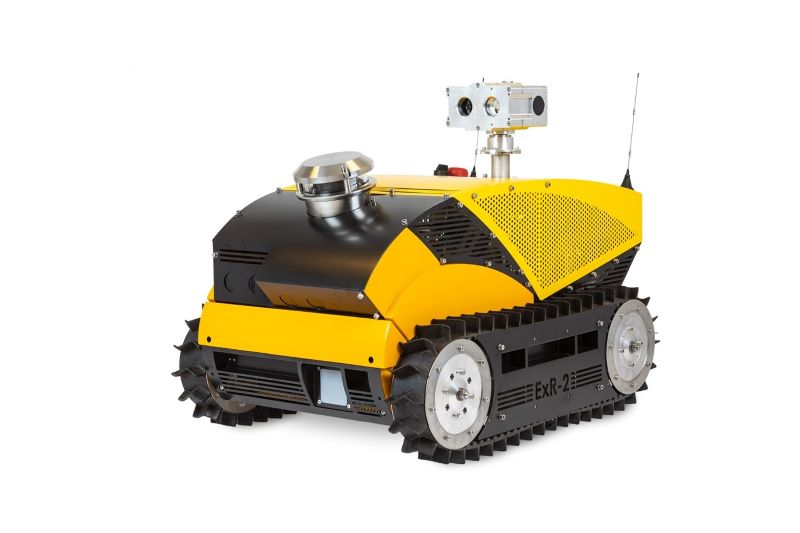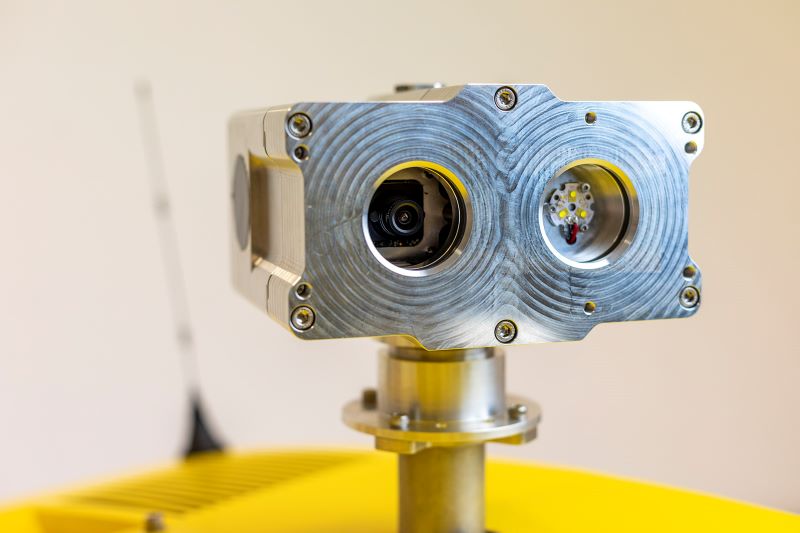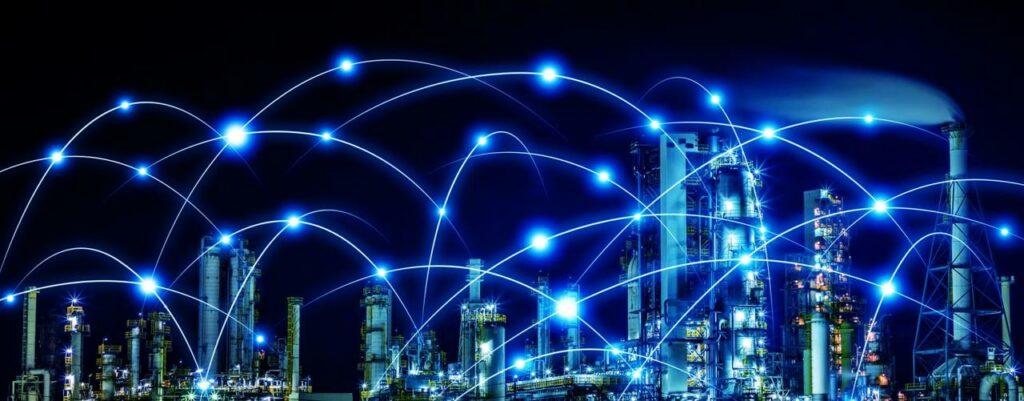It may come as a surprise that although robots have been making cars for decades and are roaming the surface of Mars, they have not been used to operate installations in potentially explosive environments. Tethered, remotely operated vehicles are widely used by the subsea sector, but they have never made the evolutionary step onto land. This is changing as robot companies develop ‘Ex-products’. A leading role is reserved for ExR-2, the latest showpiece of our partner ExRobotics. Time for an update by Iwan de Waard, because the use of robotics provides a huge safety benefit and there is a suitable robot for every situation.
How it all began, the ExR-1
Since the introduction of the ExR-1 in 2018, our customers on four continents have performed missions over a total distance of more than 200.000 meters. During these missions, they have collected 15.000 points of interest and have detected several gas emissions before human operators were able to do so! Using robotics is an enormous safety advantage. Working with our customers we’ve used this expertise better to define use-cases and to design our latest robot platform – the ExR-2.
Emissions Detector and Co-Operator
Remote, hazardous facilities with harsh climates are not welcoming places for humans. Therefore, many are designed to be normally unmanned. However, human interventions are still necessary. When they are, it takes time to mobilise a team, and when the team arrives their productivity is hampered by protective clothing and breathing apparatus.
If robot operators are permanently stationed in such facilities, they can be immediately activated and operated by humans sitting in the comfort of a distant control room. On occasions, a robot might be able to resolve the problem and restart production long before its human alternative can arrive. If not, it can diagnose the situation so that the intervention team is prepared and aware of any hazards it might face. The team might also use the robot to perform the most hazardous tasks. We originally designed the ExR-1 Co-Operator for this use case.
Later, other customers started using the ExR-1 to perform daily operating rounds and to scan for fugitive emissions. These customers decided that this use case requires a high degree of autonomy. Together with our software partner (Energy Robotics) we developed a machine-based vision application that uses an orange line to navigate autonomously. The ExR-1 Emissions Detector is now our most used platform.
Digital twins and robotics
Machine-based vision and markers are a great technology but they’re less flexible for unstructured missions. The front runners in the industry are starting to integrate robotics data into their digital twins. Algorithms use this data to identify abnormal situations and then assign tasks to the resources best able to perform the tasks. In this vision, the digital twin takes control of coordination and makes decisions. Robots not only collect data they can also be allocated tasks. This sounds futuristic but ExRobotics already has multiple customers who have already taken their first steps into this new world. To support them we’ve developed our most flexible platform, the ExR-2 Investigator.
The ExR-2 Investigator

The new ExR-2 Investigator is equipped with a 3D LiDAR system and a supercomputer to run Artificial Intelligence/Machine Learning algorithms. It can also be equipped with a wider range of sensors than the ExR-1. As well as the standard panning zooming inspection camera and the microphone, customers can choose to install:
- 2 gas detectors from a range of 5
- An elevating mast that raises the panning zooming inspection camera to eye level
- An additional upwards facing inspection camera
- A thermal IR camera
- An acoustic analyser from Det-tronics.
All these sensors are of course mobile! The ExR-2 contains a patented induction charger that can fully charge the robot in seven hours in an ATEX/IECEx zone 1 environment. This is done autonomously using our docking station.
All robots from ExRobotics are available with a full-service package. This starts at 35.000 euro per year (RaaS) for a basic ExR-1 Co-Operator. Given that a robot can operate for 3,000 hours per year this is equivalent to 12 euro/hour. We believe this is a great value for our customers and will help them to take the next steps in lowering their production costs and increasing the safety of their human operators.
Your ticket to the future
Are you ready to take the plunge into the world of robotics and to reduce costs whilst also improving safety? ExRobotics offers remote demonstrations for early adopters. To drive an ExR-2 from your home or office please visit the ExRobotics website to register.




